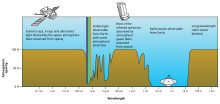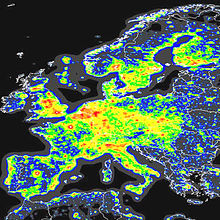User:OdellZ17/sandbox
Article evaluation
[edit]The article I am evaluating is Visible-light astronomy.
Everything on the article seemed relevant to the topic. I didn't really find anything that seemed distracting or otherwise unnecessary to include in the article. It seems to be neutral, especially since there isn't a lot of room for opinion on the subject that the article covers.
There are only 2 citations or "references" as it is called on the actual page. Only one of them seems to work, which links to a book about Galileo, but it does seem to accurately reflect what is written in the article.
There doesn't really seem to be much more needed sources for the article, as there isn't a ton written about it in the first place. I didn't find anything biased in the article.
While there doesn't seem to be any out of date information, the article definitely could be expanded upon, namely in the history section. Additionally, it doesn't mention amateur astronomy, which should probably be noted, as visible-light astronomy is nearly exclusively the type of astronomy practiced by amateur astronomers.
On the Talk page, there are 2 comments that both talk about how the page should be expanded, and one mentions some specific ways that it could be expanded. Overall, there doesn't seem to be a lot of traffic or discussion on the article. The last comment made on the Talk page was made in 2012, so it really doesn't seem to be a super discussed article. I think it would be interesting and not completely out of my knowledge or ability to help flesh out this article more.
 | This is a user sandbox of OdellZ17. You can use it for testing or practicing edits. This is not the sandbox where you should draft your assigned article for a dashboard.wikiedu.org course. To find the right sandbox for your assignment, visit your Dashboard course page and follow the Sandbox Draft link for your assigned article in the My Articles section. |
Finalize your topic / Find your sources
[edit]The article I am working on is Visible-light astronomy. I was thinking that I would work on adding some major sections to it, as the article is pretty lacking. The only sections that the article has are "History" and "Effect of ambient brightness", both of which are pretty lacking as far as length, but shouldn't be too much work to improve upon. The "See also" section would also be a pretty easy list to expand upon, as that would just require adding links to similar subjects, like other kinds of astronomy. I'd also like to add types of telescopes, what exactly can be seen in visible-light astronomy, maybe touch upon the electromagnetic spectrum, and maybe briefly go over amateur astronomy. Here are some sources I'm looking to use: Elert, Glenn. "The Electromagnetic Spectrum, The Physics Hypertextbook". Hypertextbook.com., History_of_astronomy and History_of_the_telescope for some general history on visible-light astronomy, especially since early astronomy was visible-light based.
Visible-light Astronomy improvements/drafts
[edit]

Commonly observed objects
[edit]The Moon is a very commonly observed astronomical object, especially by amateur astronomers and skygazers. This is because of several reasons: the Moon is the brightest object in the night sky, the Moon is the largest object in the night sky, and the Moon has long been significant in many cultures, such as being the basis for many calendars. The Moon also does not require any kind of telescope of binoculars to see effectively, making it extremely convenient and common for people to observe.
Meteors, often called "shooting stars" are also commonly observed. Meteor showers, such as the Perseids and Leonids, make viewing meteors much easier, as a multitude of meteors are visible in a relatively short period of time.
Planets are usually observed with the aid of a telescope or binoculars. Venus is likely the easiest planet to observe without the aid of any instruments, as it is very bright, and can even be seen in daylight.[1] However, Mars, Jupiter, and Saturn can also be seen without the aid of telescopes or binoculars.
Constellations and stars are often observed, and have been used in the past for navigation, especially by ships at sea.[2] One of the most recognizable constellations is the Big Dipper, which is part of the constellation Ursa Major. Constellations also serve to help describe the location of other objects in the sky.
See also
[edit]Optical telescopes
[edit]There are three main types of telescopes used in visible-light astronomy:
- Refracting telescopes, which use lenses to form the image. Commonly used by amateur astronomers, especially for viewing brighter objects such as the Moon, and planets, due to lower cost and ease of usage.
- Reflecting telescopes, which use mirrors to form the image. Commonly used for scientific purposes.
- Catadioptric telescopes, which use a combination of lenses and mirrors to form the image; essentially a combination of refracting and reflecting telescopes.
- ^ "1995JBAA..105..311E Page 311". adsabs.harvard.edu. Retrieved 2018-07-25.
- ^ "Celestial Navigation | Time and Navigation". timeandnavigation.si.edu. Retrieved 2018-07-25.
